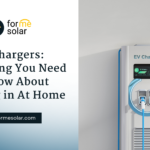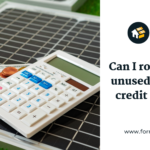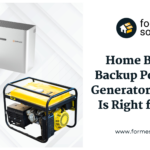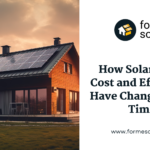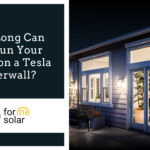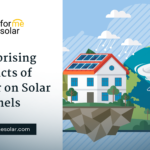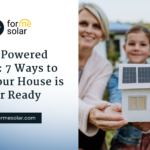How Many Solar Panels Do I Need?

Table of Contents
I have never heard anyone say, “I wish my electricity bill were higher.” Everyone hates how their electricity bill is too high. In order to see if other options exist the first question our customers ask is, “How many solar panels do I need for my home?”
Our electricity usage in the future will only increase, and our reliance on the utility companies will only grow to become more and more expensive. Ultimately, not getting solar will cost you money! But you can always stop the rising cost of electricity by installing solar panels for your home.
When you start your solar panel shopping experience, you want to know the size of the system you will need to purchase. Just like when you buy a char, it is much easier when you know what type of car specs you are looking for. Similarly, you should be able to ask a solar company to, “Give me quotes for an X-kW-sized solar array.”
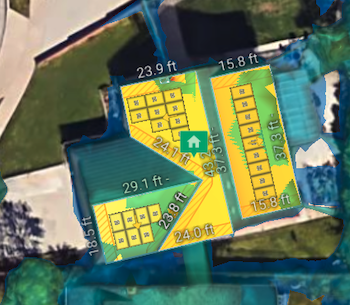
When you switch to solar energy to power your home, your solar panel system’s size is defined by one simple question: How much solar do I need? You have to review several factors when installing solar panels on your roof.
It is essential first to evaluate what your overall goals are for going solar. Evaluate the options your utility company provides. And the condition of your home.
- Consider your goal for going solar
- Research your utility company’s policy on solar
- How Much Power Does Your Home Use Annually?
- Factor for future energy consumption changes
- Create a solar power production goal
- Account for Solar Panel Efficiency Loss
- Determine avg direct sunlight
- Calculate your solar system size. (Here’s the math!)
- Get the number of panels you need by wattage
- Get a solar quote for your ideal system size.
1: Consider Your goal of going solar
Determining what your goals are when going solar will help you with your end goal. Whether that is minimizing environmental contamination, lowering your monthly bill, enhancing the look of your roof, or maximizing your Return on Investment (ROI). Ask yourself what your goal is for getting solar. Are you hoping to cut back on your monthly electricity costs? Reduce your Federal Tax Liability? Decrease your carbon footprint? Enhance the value of your house?
How much electricity you consume every month will significantly impact how many solar panels you need to install on your roof.
2: Research your utility company’s policy on solar
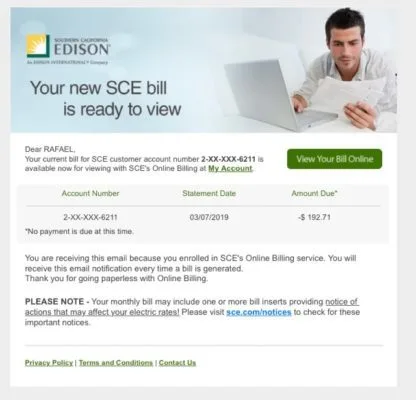
Does your utility company have a net energy metering program? Most utility companies have net energy metering (NEM) policies, where utilities have to credit owners of a home solar energy system for the excess energy they produce. Without a Net Energy Metering program, you won’t get paid for any extra solar power you generate.
In California, the net energy metering means that any kWh of energy your home’s solar panels generate over your household’s utility demands gets credited back to you in equal measure. Please note, the amount you get credited isn’t very significant. Most utility companies will pay in the range of .04-.12 cents per kilowatt-hour. However, if you undersize your system, you may be paying a range of .22-.48 cents per kilowatt-hour.
Pro Question: How much will your utility company allow you to oversize your system? Utility companies will limit how large you can build your solar energy system. Some utilities will allow you to oversize your system to 150%, while others will only allow 100%.
3: How Much Power Does Your Home Use Annually?
To calculate how many panels you need. It would help if you determined how many solar panels are necessary to offset the amount of kWhs across a full year. Based on the average amount you consume daily or monthly, you can calculate how many kWh’s of power your home consumes on an annual basis. A kWh is a unit of measurement for the amount of energy that the utility company uses to gauge how much electricity your home consumes. Your electricity cost is based on kWh and how much you consume.
The easiest way to determine your annual kWh consumption is by taking the average daily usage and multiplying it by 365 (number of days in a year). This number is typically found on your electricity bill’s first page, near the bar chart graph.
4: Consider any impact on future energy consumption
Now that you have your current amount of electricity usage. Verify that the system size matches your expectations and future energy needs. Specific changes could impact how you should size your energy system, like:
- Do you plan on getting an electric vehicle in the next year?
- Are you planning on having another member of the household?
- Making any changes to your A/C unit?
- Adding a swimming pool?
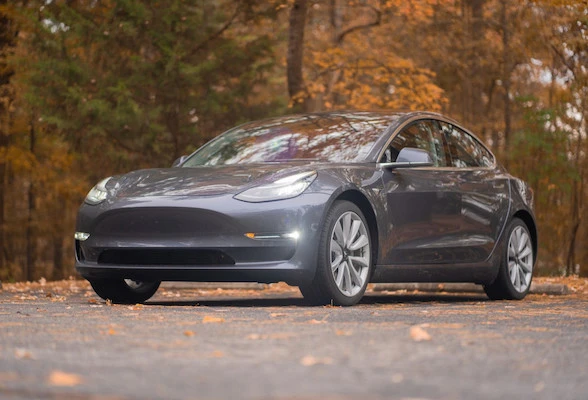
5: Target a solar power production goal
Now that you have calculated how many kWhs are currently being used—factor in any adjustments based on foreseen changes to your electricity consumption. You can either have this as an annual breakdown of “kilowatt-hours,” monthly or daily usage.
Based on your recent utility bill, it may show that you are currently using 6,000 kWh annually. This number can then calculate a monthly average of 500 kWh(6,000 kWh / 12 months). Or a daily average of 16.5 kWh (6,000 kWh / 365 days per annual statement). This quick calculation will tell you how much energy your solar energy system should offset to determine how many solar panels you will need to offset that solar power production goal.
6: Factor in Solar Panel Degradation

All solar panels, regardless of the manufacturer, will depreciate. When the solar panels’ silicon cells get hit with the sun’s radiation, they will slightly shift—losing a bit of their performance. This degradation happens the most in the first three years and levels off substantially afterward. The average degradation rate for solar panels is between .5% to .8% per year. A solar panel with a degradation rate of 1% a year will operate at 90% efficiency or better after ten years. It is also fair to assume that your solar panels will still produce energy efficiently even after 30 years.
7: Determine avg direct sunlight
Your solar energy system is dependent on how much sunlight it gets exposed to—the average number of direct sunlight that your home receives will vary depending on location and local climate.
The map above indicates the average peak sunlight hours that a home should expect in these zones. These figures are based on an average that takes under consideration the seasonal cycles between summer and winter. The winter season may produce 25-50% less peak sun hours than these average figures. In contrast, they are overproducing during the summer months.
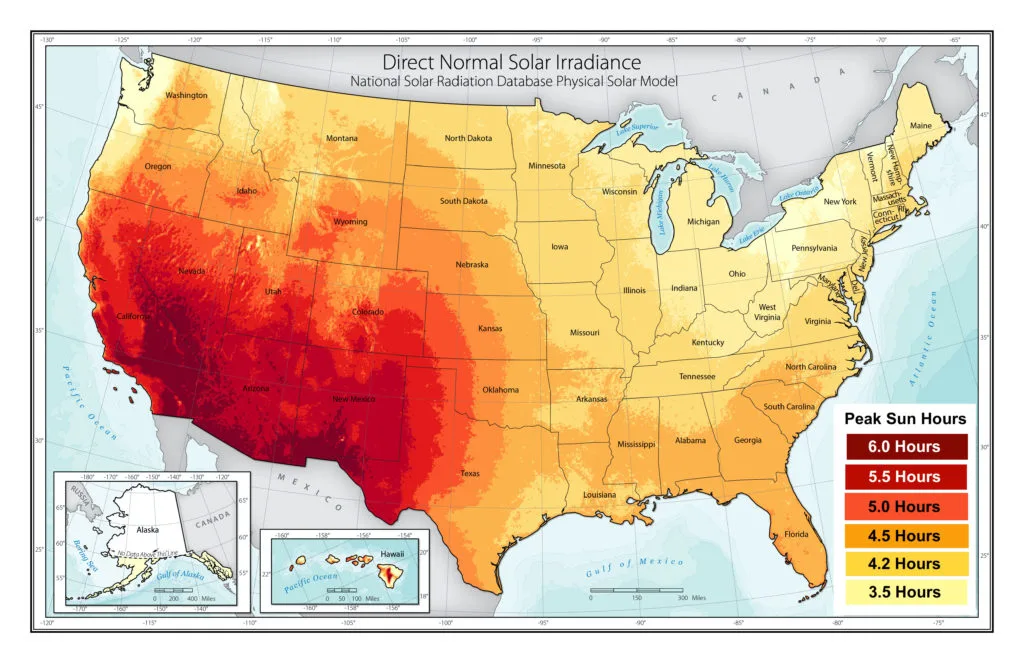
8: Calculate Your Solar System Size. Here is the Math!
Now that you know your goals and annual electricity company, you have all of the ingredients to determine your ideal system size. Here is the formula to use:
kWh per month / (avg sunlight per day * 30.5) = kW solar system size
For example, if you use 1,000 kWh per month and have an average of 6 hours of sunlight per day. That would be 1,000 divided by 6 hours * 30. Which would provide a 5 kW system sized.
A “5 kW” solar energy system size means that it produces 5 kWh for every hour of direct sunlight. So this means that for your solar energy system to produce 1,000 kWh per month, you need 6 hours of direct sunlight per day and a 5 kWh solar energy system size.
If you were only to get 3 hours of direct sunlight exposure, you would require a 10 kW sized solar energy system. Therefore, the amount of sunlight that your home is exposed to significantly impacts how large of a system you require. If your kWh per month on average is less than this number, then you know your solar energy system will cover all your energy needs.
9: Determine Number of Solar Panels Needed
To determine the number of solar panels you require for your solar energy system’s size, you need first to determine the panel wattage. Residential solar panels on the market today have a range from 340 Watts to 400 Watts. That number is the amount of power that a specific solar panel produces. So, to power the same 6 kW system, you’d need a lot more 45-W panels than you would 315-W panels. Get the idea? If you have a lot of optimal space on your roof, you may want to consider lower wattage panels. If you don’t have a lot of space on your roof, you should consider a higher wattage panel, like a 400W solar panel.
Take your solar energy system’s size (From Step 8, in kW), and follow these steps:
- Step 1: Multiply the system size by 1,000 (There are 1,000 Watts in 1 kW)
- Step 2: Determine the solar panel wattage you are considering (eg. 340w – 400w)
- Divide Step 1 by Step 2
For example, a 5kW system is a 5,000 Watt System. If you are considering 250w solar panels, then 5,000/ 250w = 20 Solar Panels. So you would need to buy 20 250w solar panels.
10: With a baseline number of solar panels needed, get quotes
You now have some of the most critical information you need to request a specific quote. This will help ensure that you don’t buy more solar panels than you need. After you get at least 3 quotes, learn how to compare solar panel quotes.
How Many Solar Panels Do I Need? Overview
10-step process for determining how many solar panels you’ll need to make the energy you want.
- Consider your goal for going solar
- Research your utility’s policy on solar
- How Much Power Does Your Home Use Annually?
- Factor for future energy consumption changes
- Create a solar power production goal (Store this #)
- Account for Solar Panel Efficiency Loss
- Determine avg direct sunlight
- Calculate your solar system size. (Here’s the math!)
- Get the number of panels you need by wattage
- Request solar quotes for your ideal system size
Get a FREE System Size Evaluation Today to see the options that work best for you at the lowest price, only at Forme Solar.
Considerations that Impact How Many Solar Panels I need
Different Panel Performance
It is also essential to consider that some solar panels are more efficient than others. Different panels are more efficient. Some solar panels can be 95% efficient after 10 years and others can be 90%.
Multiply the panel wattage by the performance to determine the difference in terms of how solar panel performance will impact overall production.
Let’s say 340w * .95 = 323kwh vs 340w * .90 = 306 kWh
323 kWh vs 306 kWh is a 17 kWh difference
17 kWh * 10 solar panels = 174 kWh.
So it may make more financial sense to look at $/wat. If the price is right, you would save more and make more energy by adding another less efficient solar panel. That is why it is important to calculate your solar energy system’s cost by $/watt.
Roof Type and Angle
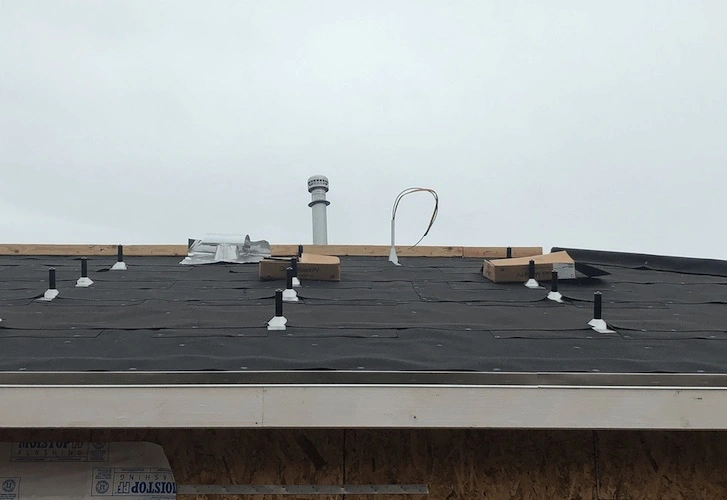
Every home is different, especially when it comes to your roof. From how the sun hits your roof, the type of material, to the shape can all impact the number of solar panels you may need. There are also additional regulations when it comes to installing different types of roof types. Therefore, if you have an oddly shaped roof or even a smaller one, consider the surface’s size and angle to determine the number of panels you require.
The slope and direction of your roof make a significant impact on determining how much energy your solar panels can produce. In California, your South facing roof planes are the best, followed by West, East, and then North. By placing your solar panels at the right angle, you can dramatically increase your solar energy system’s output.
Available Roof Space
Roofs with lots of workable space can maximize their ROI by using lower wattage and more cost-efficient panels. There is no reason to pay for the latest technology if you don’t need to. There are instances where higher wattage panels, like the 400w Solaria All-Black Solar Panels, make sense. We typically recommend higher wattage panels to homeowners who don’t have enough roof space or too much shade. Higher wattage panels allow the homeowner to offset the most amount of energy in limited space.
Why Pick Forme Solar?
Solar panel installation issues are common—no need to worry. Our history in solar repair has allowed us to fix every flavor of a bad installation at Forme Solar. We are one of the few solar companies willing to touch systems other solar companies installed. We believe homeowners should never be stuck with a roof leak or underperforming solar panels. That is why Forme Solar has fully trained, certified, and insured solar installers on our team that are always honest about every solar service we offer.
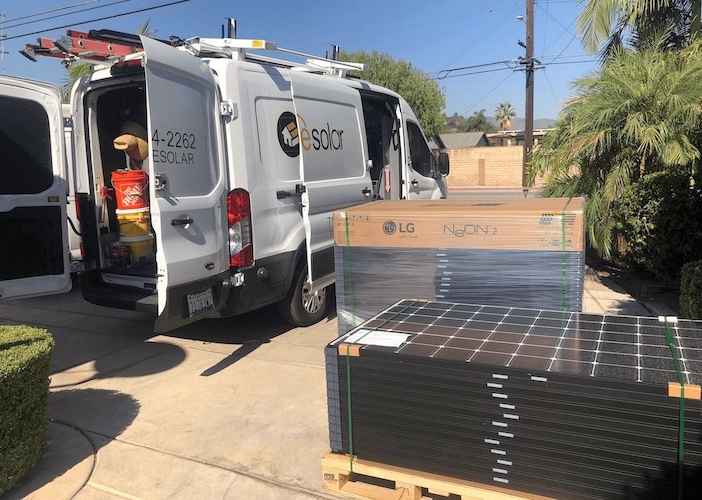
Our team at Forme Solar has been repairing solar panel installations for over ten years. We know what it takes to create a long-lasting system that we feel confident guaranteeing for 25 years. Forme Solar high-quality solar services so that when your home has any issues, we can find it right away and get it fixed quickly to prevent further damage and cost.
Forme Solar uses state-of-the-art tools and cutting-edge technology to improve the customer experience while trying to cause the least disruption.
Call Forme Solar Today at 714-694-2262! Or request a quote to evaluate your best solar options!


